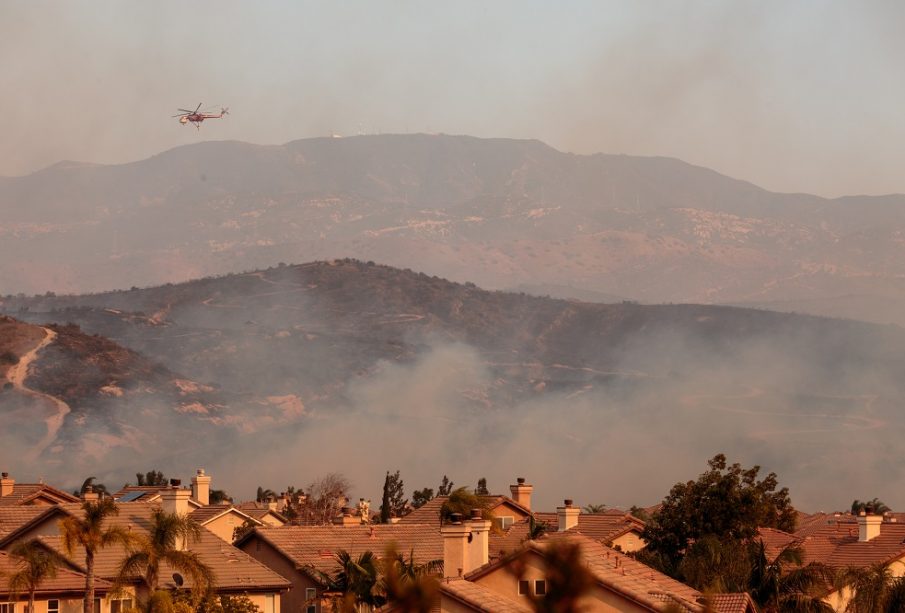Climate Risk Could Hit Already Vulnerable Nations With a Double Whammy

When financiers believed about how environment modification might affect their portfolios a decade ago, their attention was normally focused on the companies they were buying. How huge was a firm’s carbon footprint, for example, compared to its industry peers? These days, individuals looking at environmental risk are significantly concentrated on a brand-new issue: the assets released by federal governments.
Numerous climate- or ESG-focused sovereign bond funds have emerged in the past 18 months, released by everyone from the huge BlackRock to smaller sized firms like Legg Mason and NinetyOne. FTSE Russell has an environment danger sovereign financial obligation index. These services deal with the growing need for methods to filter out climate risk in sovereign bond portfolios, and even the European pensions and insurance regulator Eiopa is paying more attention to how environment modification could provide dangers to federal government bonds.
Financiers watch out for 2 main climate pitfalls when choosing assets. The very first is “transition risk,” where a country’s economy is too dependent on contaminating markets that are falling out of favor, such as selling thermal coal– similar to financiers shunning oil business shares since of the rise of electric vehicles. When adequate investors no longer desire to own shares in a polluting company (or bonds in a country), eventually that business (or nation) may get the message and shift into cleaner practices (markets). It’s a case of totally free financial markets developing a win for nature.
The 2nd danger, called “physical threat,” is more complicated. If financiers end up being worried about a company’s vulnerability to wildfires, dry spells, or floods, it might press executives to take needed precautions; even if that vulnerability makes the company a less appealing financial investment to banks and other entities that might finance such improvements. The very same opts for people whose homes remain in vulnerable areas: It could be good, total if banks stopped using home loans for houses that will likely suffer damage, which would dissuade people from moving and constructing there. But that would be cold comfort for long time citizens who see their properties rapidly decline while close-by locations simply out of harm’s way end up being more costly.
Envision that result increased to the scale of entire nations, and you can see the potential for “environment danger” in sovereign bond purchases to create chaos.

A lot of the establishing countries dealing with increased financial strain due to the fact that of Covid-19 were currently paying a cost for their exposure to harsh weather. A working paper commissioned by the United Nations Environment Program and released by SOAS and Imperial College revealed that the 20 most climate-vulnerable countries had in overall paid an extra $62 billion in funding expenses over the decade leading up to 2018– big amounts for numerous of those nations who have fairly small economies. Zambia in September became the very first African nation to seek relief from shareholders considering that the pandemic struck, and it’s feared more will follow.
In 2018, Moody’s Investors Providers identified the 37 countries with the greatest exposure to environmental effect danger. The list is a rundown of economically vulnerable former nests, including Papua New Guinea, Cote d’Ivoire, and Cameroon. Zambia ratings highly, too. In Angola, which ranks high up on a popular index of climate vulnerability, the federal government is attempting hard to reassure bondholders that it will not miss out on a payment. Its bonds yield more than 12%, hundreds of times what similarly climate-exposed developed nations like Australia pay to borrow money.
The irony of this is probably obvious– the countries that are most susceptible to the results of climate modification are the ones who are least responsible for the emissions that create it. They’re likewise often the ones most in need of low-cost financing to construct durability and purchase cutting their own emissions.
An even sharper irony is that commercial financial institutions– banks, pensions funds, and so forth– have become larger buyers of establishing countries’ sovereign bonds over the previous 20 years, yet since the Covid-19 crisis, they have not shown excellent interest for briefly permitting these nations to suspend payments on their financial obligation. The Institute for International Finance, which represents big personal sector lenders, at first indicated in April that its members should join the Group of 20 nations in pausing gathering interest payments. The next month, nevertheless, it backed away from that position and later warned the G-20 that it shouldn’t extend its forbearance either.
Fund supervisors who boast about their ability at filtering out climate threat in sovereign debt most likely will not be able to have their cake and consume it too. As national budget plans stress under the fallout from Covid and as the effects of climate modification grow in scale and intensity, there will most likely be increasing scrutiny of how the very same financiers treat the most climate-vulnerable nations. Investors may need to reveal that protecting their own portfolios is not just worsening climate risks for others.






